Substack has an image problem. Many of the authors are adorning their posts with ‘images’. Pastiche pictures spawned by an unholy alliance of greed and arrogance. Greed : the rapacious swallowing of every human made visual on the planet. Arrogance : the literal (word/text) as the primary mode for the visual. As an Illustrator I always knew we lived in a literal society, absolute bullshit that our culture is visual. Don’t judge this culture by its wrapper. The visual power of a film like Dune (see the polished turds of recent Hollywood offerings) and the 1% of smart and engaging advertising is a thin veneer stretched over a visual hellhole. We have no understanding of our visual lives and worse no respect—-which enables this nightmare
I have a perfect example, a 6 minute walk from my home. A streetscape that has not solved the dynamic of vehicles, pedestrians, and bikes. A complete assault on the coherence of a shared space, why can Copenhagen do this without destroying the visual fabric of their streets? We jam our video screens with multiple threads of information for a brain that can only do one task well at a time. We are being conditioned to ignore a singular coherent stimuli—everything, everywhere, all at once—is what we live. Pondering, thinking, and reflecting on visual stimuli is central to developing visual literacy. Sadly, our attention was bought and sold the minute our eyes could focus.
This is where the most pernicious manipulation is used. We have over a century of social science experiments and billions spent on keeping us tethered to a constant artificial visual stream. Depression, anxiety, a fractured culture—-look no further than the social experiment of your attention being wrung out of you every waking moment of your life. I don’t want to tear it all down, if we are searching for answers, adding A.I. to this mess will have the net effect that the designer/illustrator Frank Newfeld opined about the use of the computer in design. ‘Shit goes in and slick shit comes out’. We think we are changing the equation by adding algorithms, but we are undermining our biology. I just want to rent my eyes back for seeing where I am.
Now the word people can excrete prompts to make pictures. Hallelujah! The author can get exactly what they want, like the perfect drive through service. Same quality of food served in a drive through and prepared in less than 3 minutes, high in visual calories and low in any nutrients like thinking, feeling and meaning. Henry Oliver in an excellent Substack post details the unhappiness, dissatisfaction, and fractured, trauma drenched culture we live in…and offers a prescription. The Jane Austen Cure—-read a good book. What is judged good, may be another argument, but my argument is about what happens after he ends his post…the terrible A.I. image (above and detail below) that let’s all the air out of his argument.



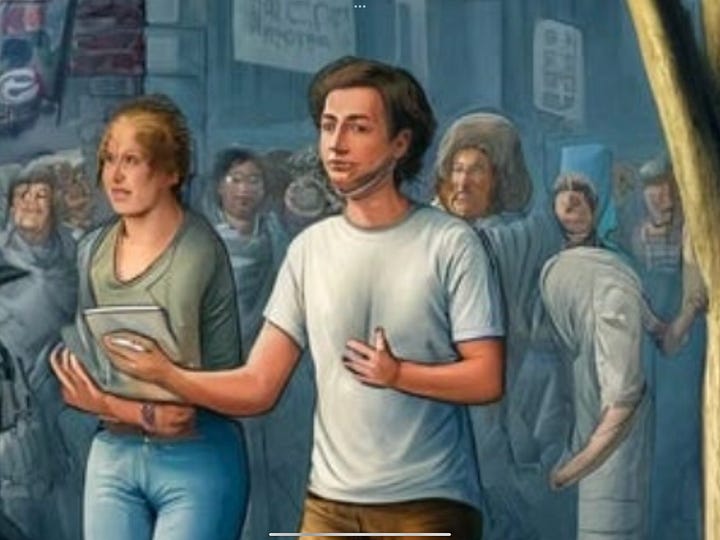
Silly visual person, why do you care so much? Why worry that there is a pile of mystery meat in the foreground grass, or faces are nightmarish quagmires with hand stumps, and placards and billboards are in Klingon or something. It’s the ‘just good enoughness’ of it, the lazy, casual brutality of stripping anything of worth from an image meant to express content about a text. It demeans and denigrates our ability to read and be challenged by the visual. It is so obviously literal——because it is born in words, if we count the reanimated sewn together dead body parts of a Dr. Frankenstein progeny a birth. There is no imagination here, trained on light, space, texture, surface, material, and sensation. Nothing embodied, embedded and extended through human cognition and engagement with the text and the experiences of life.
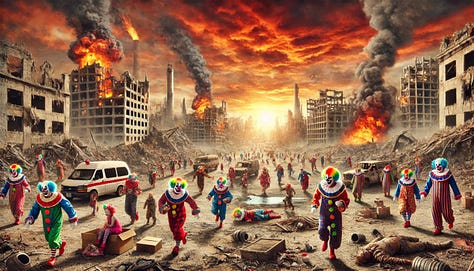
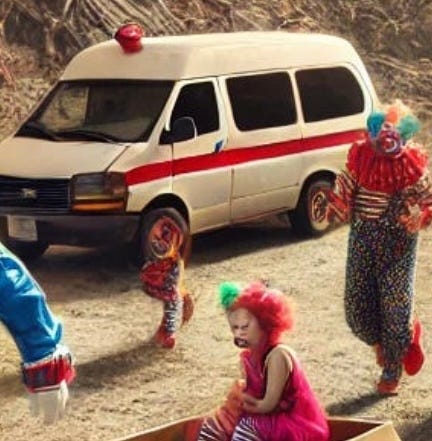
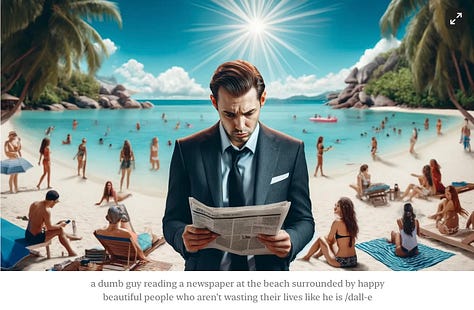

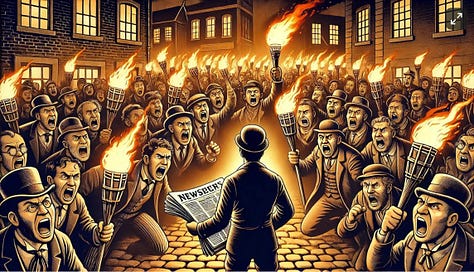
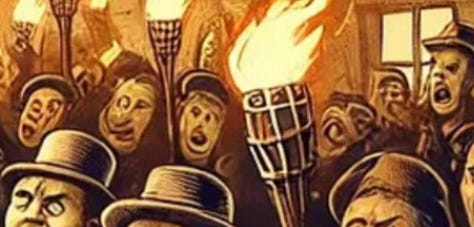
These are malignant images that we will pay dearly for because they blunt and blind a culture that is already stumbling in the dark. It is as if we had map makers create the worst possible representations of our world and we took these flat lies to guide our way forward.
I have worked with word people all of my Illustration career. The best experiences are when we stay in our lanes. I don’t correct their grammar and they don’t tell me how to draw. That doesn’t mean we don’t have a dialogue, or that I have to provide words and especially words from their own text to explain my visual solution. We are both serving the reader and my work is not page candy or wallpaper to make the drab wall of words more palatable—-my role is to offer another reading, not an alternative text but a visually literate window into the room of the text.
I have always considered reluctant readers when I made images for books for teens and adolescents. There are so many awful picture books for kids that drain the joy out of the visual and use it to hammer home the text. My work for books includes 8 to over 80 year olds—-kids to adults that can read and just maybe experience a visual image as more than just a colourful speed bump between pages.
We have survived and thrived on this planet through the work of our hands, minds, and eyes. I really do believe that if we had a more rich and complex understanding of our visual world we would read the words, taste the fruit, and hear the music of this world at a deeper level. I want to read books written by people that live or have lived, is it too much to ask writers to do the same for the images they choose?
I had promised a post about a unique early 20th century designer this week, still in process…writing is damn hard!




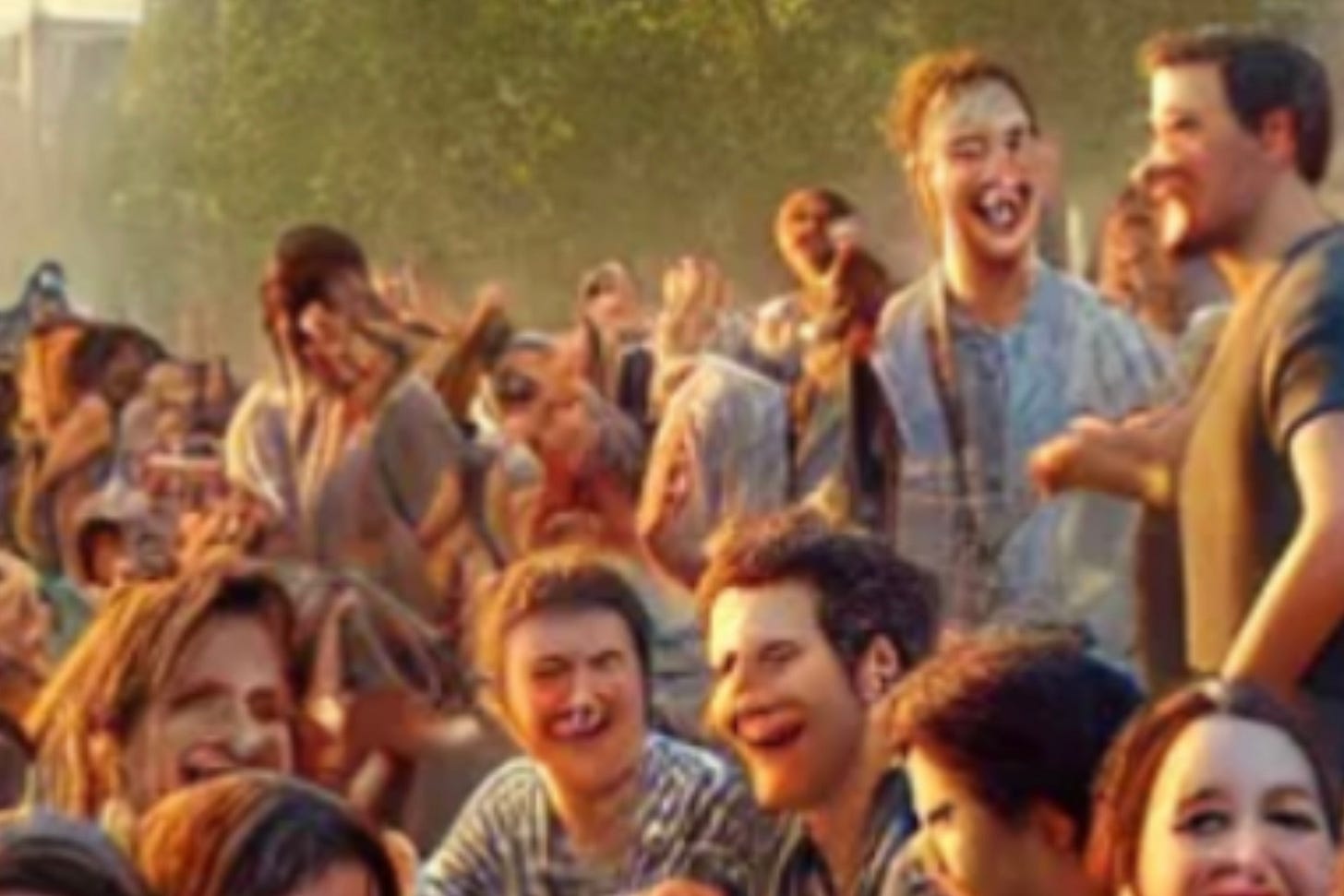
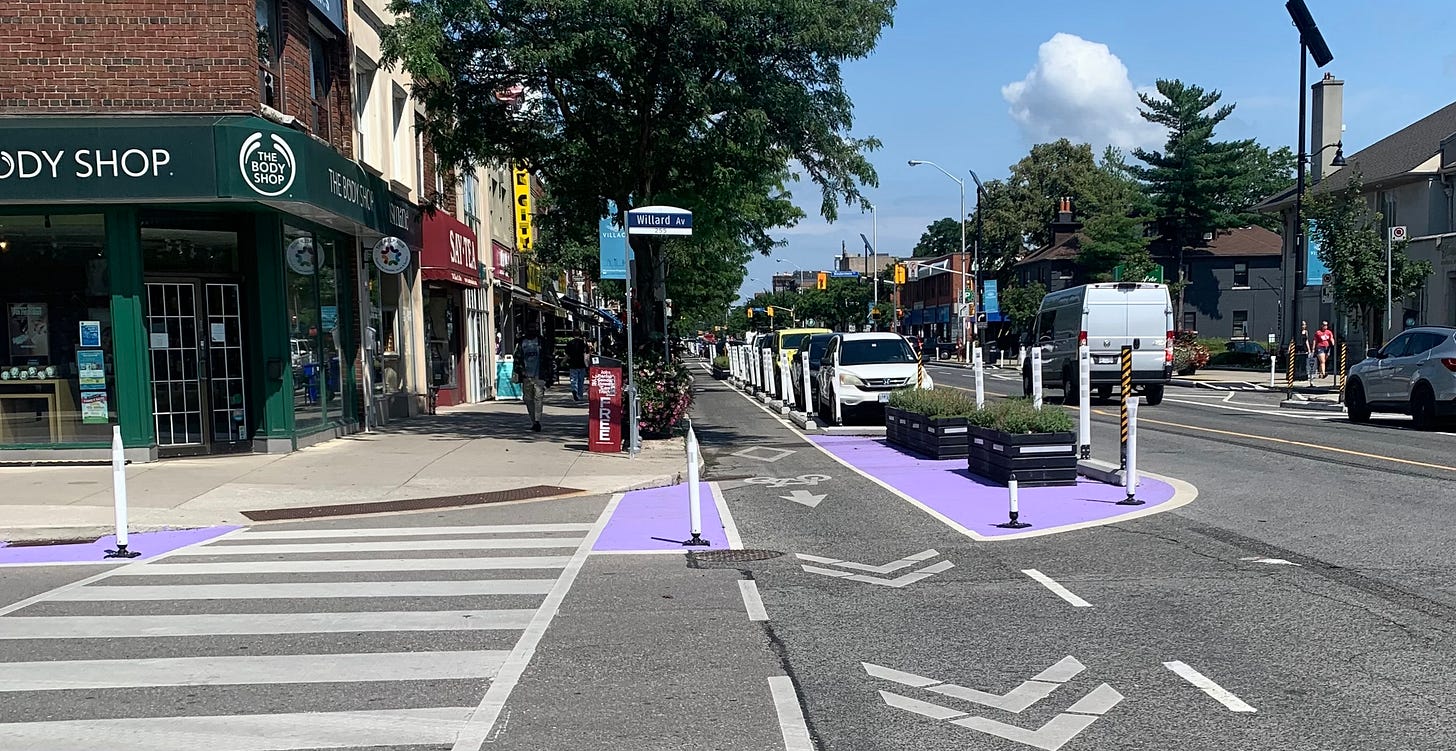
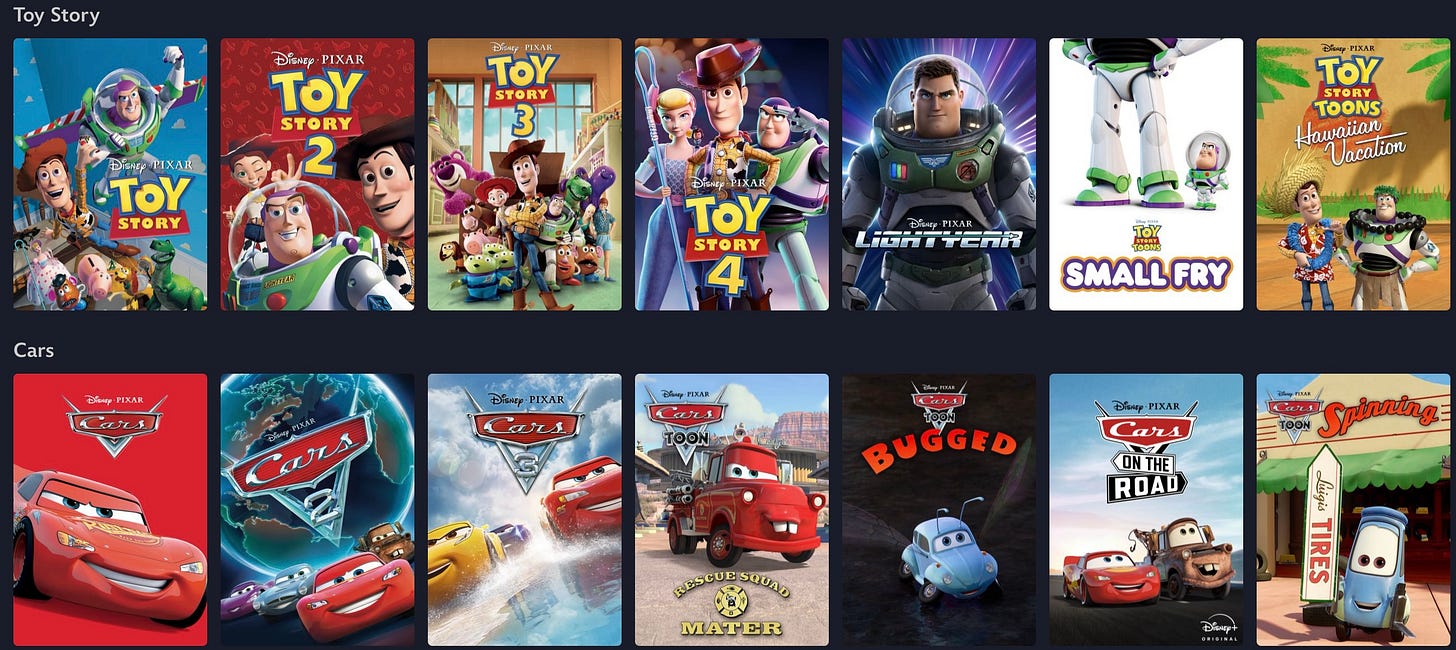
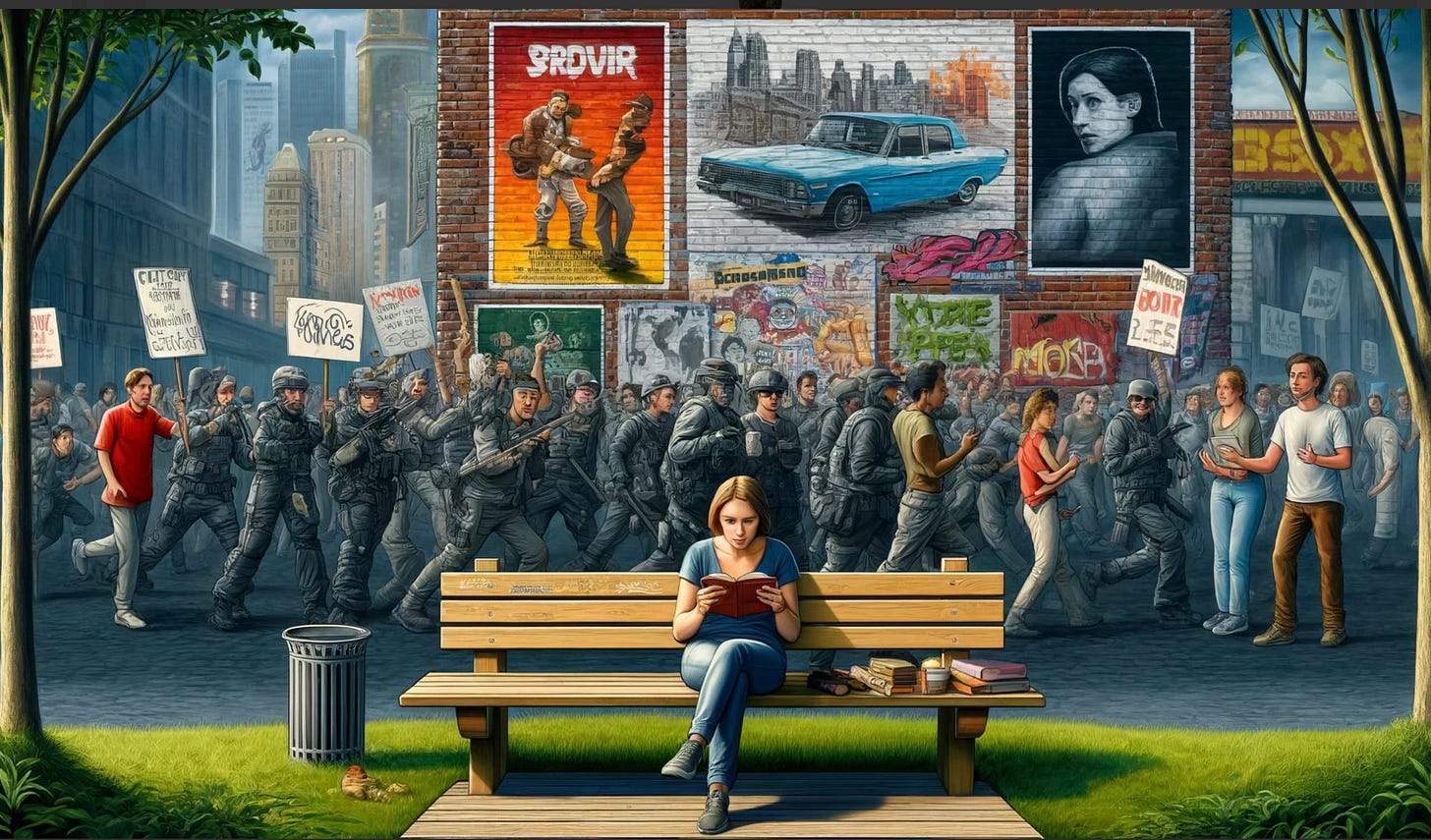
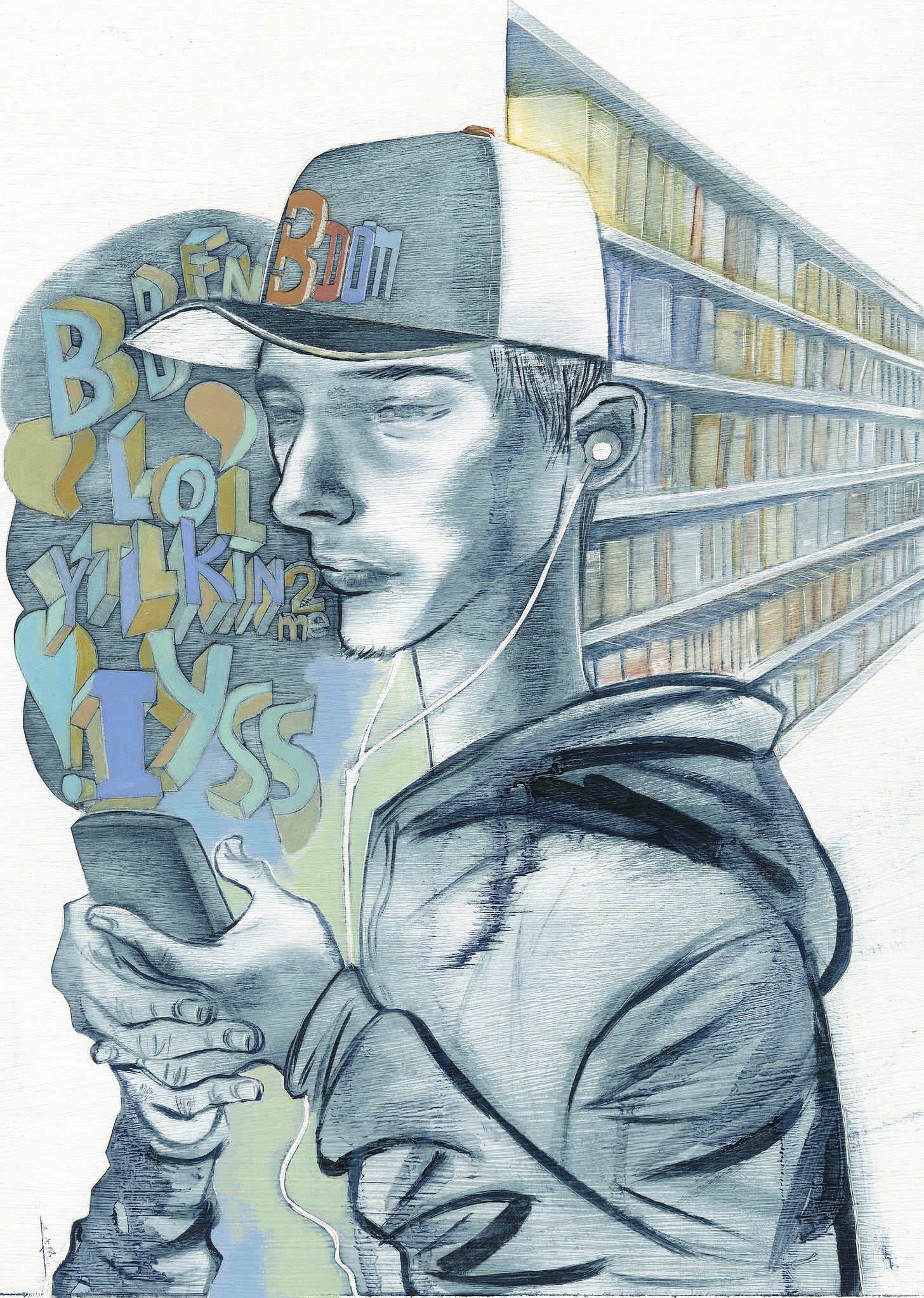
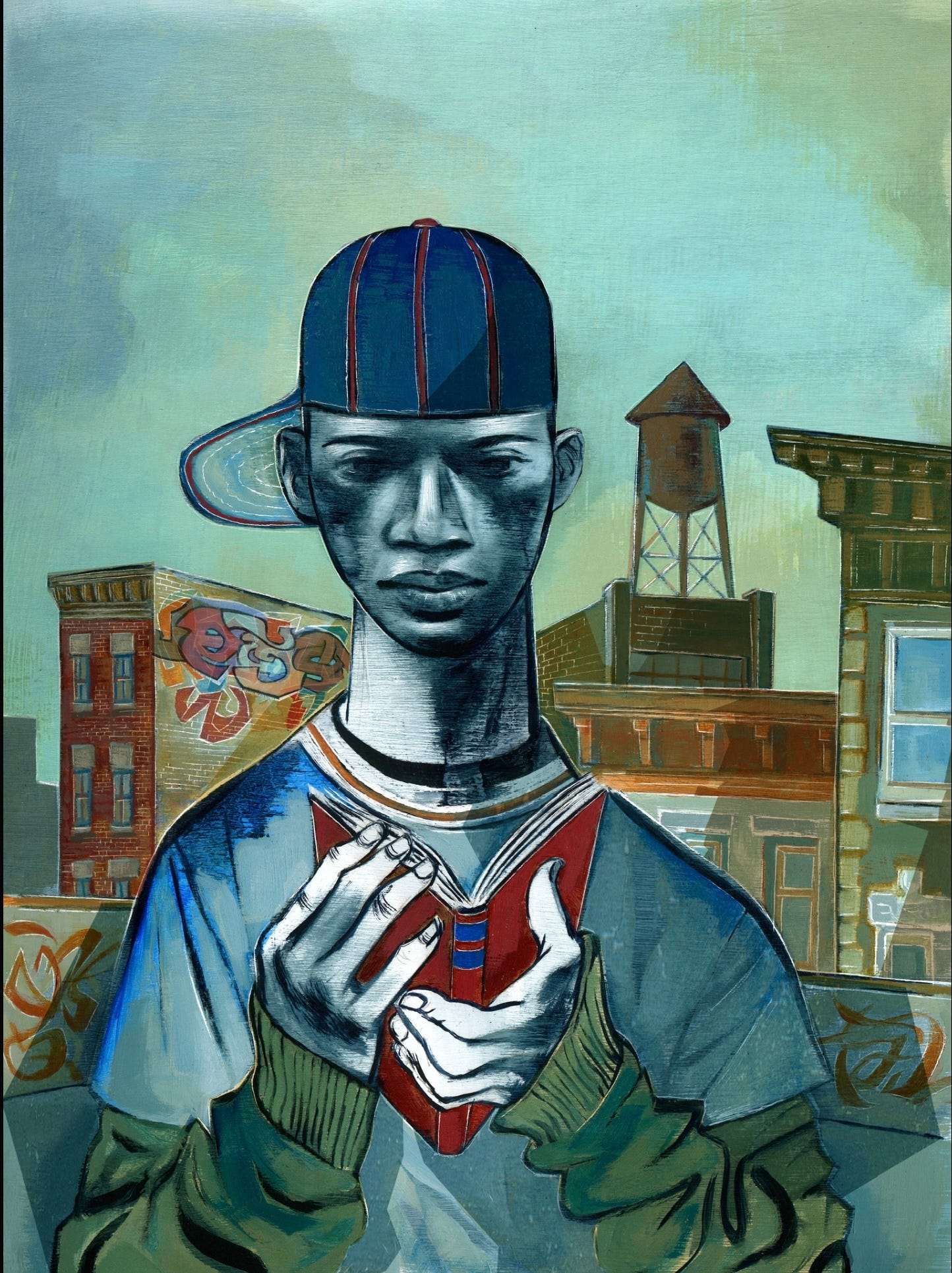
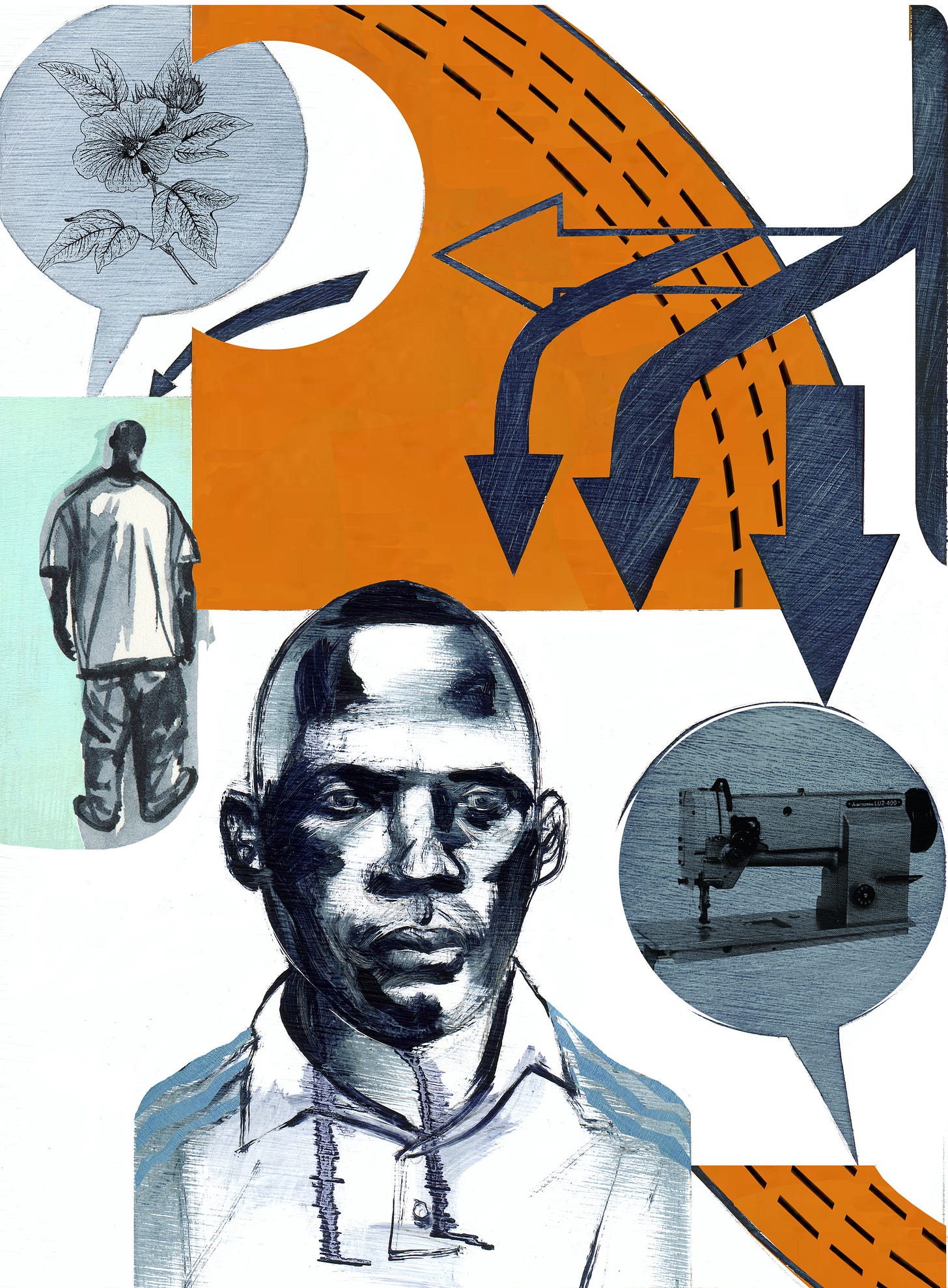
Landed well, Joe. And yes, writing is hard. You're doing a fine job of it for a picture guy.
Thank you so much for these insightful thoughts.
I’m curious, being in academia, if you’ve spoken to anyone in the art history department on the topic of AI?
I wonder how they interpret this contemporary push towards adopting AI technology.